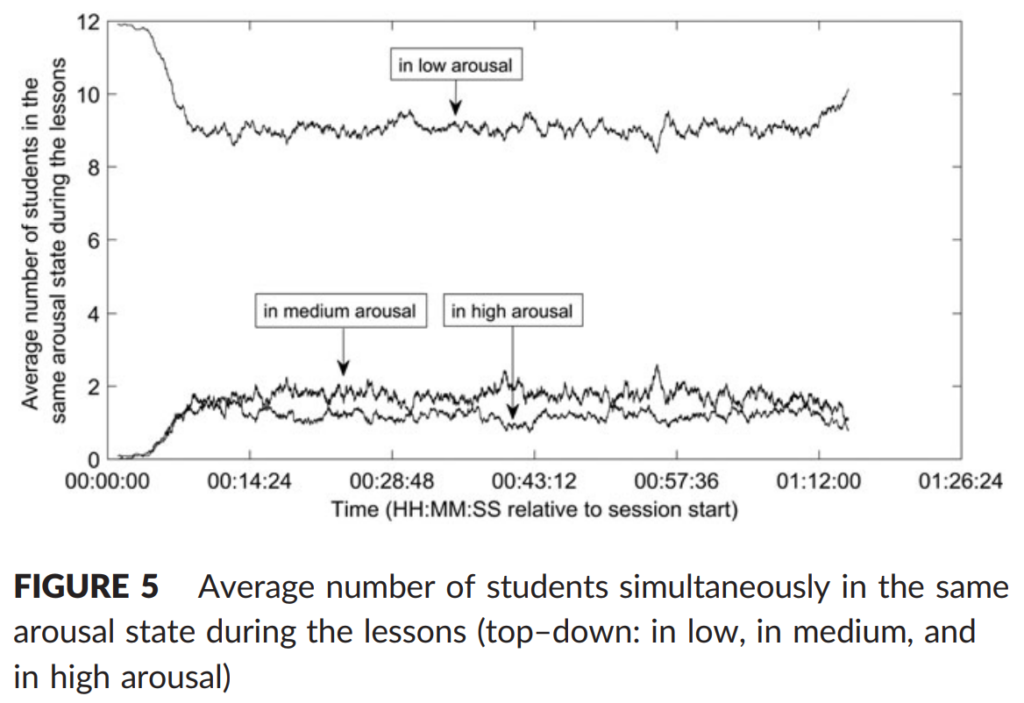
Pijeira-Díaz, H.J., Drachsler, H., Kirschner, P.A. & Järvelä, S. (2018). Profiling sympathetic arousal in a physics course: How active are students? Journal of Computer Assisted Learning
Abstract
Low arousal states (especially boredom) have been shown to be more deleterious to learning than high arousal states, though the latter have received much more attention (e.g., test anxiety, confusion, and frustration). Aiming at profiling arousal in the classroom (how active students are) and examining how activation levels relate to achievement, we studied sympathetic arousal during two runs of an elective advanced physics course in a real classroom setting, including the course exam. Participants were high school students (N = 24) who were randomly selected from the course population. Arousal was indexed from electrodermal activity, measured unobtrusively via the Empatica E4 wristband. Low arousal was the level with the highest incidence (60% of the lesson on average) and longest persistence, lasting on average three times longer than medium arousal and two times longer than high arousal level occurrences. During the course exam, arousal was positively and highly correlated (r = .66) with achievement as measured by the students’ grades. Implications for a need to focus more on addressing low arousal states in learning are discussed, together with potential applications for biofeedback, teacher intervention, and instructional design.
Lay Description
What is already known about this topic:
- Cognitive and affective processes have a physiological component in arousal (activation).
- Electrodermal activity is a well‐validated indicator of sympathetic arousal.
- An inverted U curve describes performance as a function of arousal (Yerkes–Dodson law).
- Learning, to be effective, requires the active participation of the learner.
What this paper adds:
- A profile of arousal levels (low, medium, and high) in the classroom (entire physics course).
- Low arousal predominated in the classroom in both incidence and persistence.
- Students’ grades correlated positively with their sympathetic arousal levels during the exam.
- A technique for discarding low signal‐to‐noise ratio electrodermal activity recordings.
Implications for practice and/or policy:
- Low arousal states (e.g., boredom), widespread in the classroom, need more attention.
- Teachers could identify the most engaging activities by knowing students’ arousal levels.
- Intelligent tutoring systems would benefit by incorporating sympathetic arousal measures.

